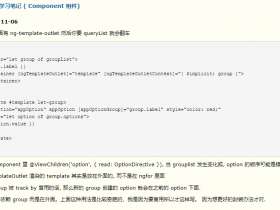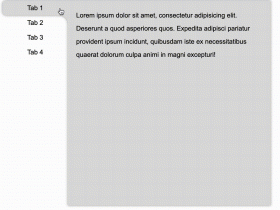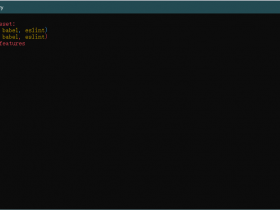- A+
所属分类:Web前端
自我理解
说明
栈是一种遵循后进先出(LIFO)原则的有序集合.新添加元素或待删除的元素都保存在同一端,称为栈顶,另一端称为栈底,新的元素靠近栈顶,旧元素接近栈底.
作用
栈也被用在编程语言的编译器和内存中保存变量,方法调用等,也被用于浏览器历史记录(浏览器的返回按钮).栈的实际应用非常广泛.在回溯问题中,它可以存储访问过的任务或路径,撤销操作.Java和C#用栈来存储变量和方法的调用,特别是处理递归算法的时,有可能抛出一个栈溢出异常
简单图解
可以看到栈的数据结构只有一个口,进出数据都走这个口,这也导致了它有后进先出(LIFO)的原则,有点像是一种思想或者是一种约定吧!!!
一个栈基本方法
- push(element(s)) : 添加一个(或几个)新元素到栈顶
- pop() : 弹出栈顶元素,并返回
- peek() : 获取栈顶元素
- isEmpty() : 判断栈中是否有元素
- clear() : 移除栈中的所有元素
- size() : 返回栈的元素个数
使用数组编写一个栈
export class StackArray{ // 栈的元素多少 这里可以去掉,直接那数组的length属性 private stackSize:number = 0; // 栈内部元素 private stackList:Array<any> = []; //构造函数 constructor() { } // 添加一个或者多个元素 push(...elements : any){ this.stackList = this.stackList.concat(elements); this.stackSize += elements.length; return; } // 弹出栈顶元素,并返回 pop(){ if(this.stackSize > 0){ this.stackSize--; // return this.stackList.splice(this.size, 1); return this.stackList.pop(); } } // 获取栈顶元素 peek(){ return this.stackList[this.stackSize - 1]; } // 判断栈中是否有元素 isEmpty(){ return this.stackSize <= 0; } // 移除栈中的所有元素 clear(){ this.stackList.splice(0, this.stackSize); this.stackSize = 0; } // 获取元素个数 size(){ return this.stackSize; } } 使用对象编写一个栈
export class StackObject{ // 栈的元素多少 private stackSize:number = 0; // 栈内部元素 private stackObject:any = {}; //构造函数 constructor() { } // 添加一个或者多个元素 push(...elements : any){ elements.forEach((element:any) => { this.stackObject[++this.stackSize] = element; }) } // 弹出栈顶元素,并返回 pop(){ if(this.stackSize > 0){ let result = this.stackObject[this.stackSize]; delete this.StackObject[this.stackSize]; this.stackSize--; return result; } } // 获取栈顶元素 peek(){ return this.stackObject[this.stackSize]; } // 判断栈中是否有元素 isEmpty(){ return this.stackSize <= 0; } // 移除栈中的所有元素 clear(){ this.stackObject = {}; this.stackSize = 0; } // 获取元素个数 size(){ return this.stackSize; } } 书中代码
数组版
export default class StackArray<T> { private items: T[]; constructor() { this.items = []; } push(element: T) { this.items.push(element); } pop() { return this.items.pop(); } peek() { return this.items[this.items.length - 1]; } isEmpty() { return this.items.length === 0; } size() { return this.items.length; } clear() { this.items = []; } toArray() { return this.items; } toString() { return this.items.toString(); } } 对象版
export default class Stack<T> { private count: number; private items: any; constructor() { this.count = 0; this.items = {}; } push(element: T) { this.items[this.count] = element; this.count++; } pop() { if (this.isEmpty()) { return undefined; } this.count--; const result = this.items[this.count]; delete this.items[this.count]; return result; } peek() { if (this.isEmpty()) { return undefined; } return this.items[this.count - 1]; } isEmpty() { return this.count === 0; } size() { return this.count; } clear() { /* while (!this.isEmpty()) { this.pop(); } */ this.items = {}; this.count = 0; } toString() { if (this.isEmpty()) { return ''; } let objString = `${this.items[0]}`; for (let i = 1; i < this.count; i++) { objString = `${objString},${this.items[i]}`; } return objString; } } 



